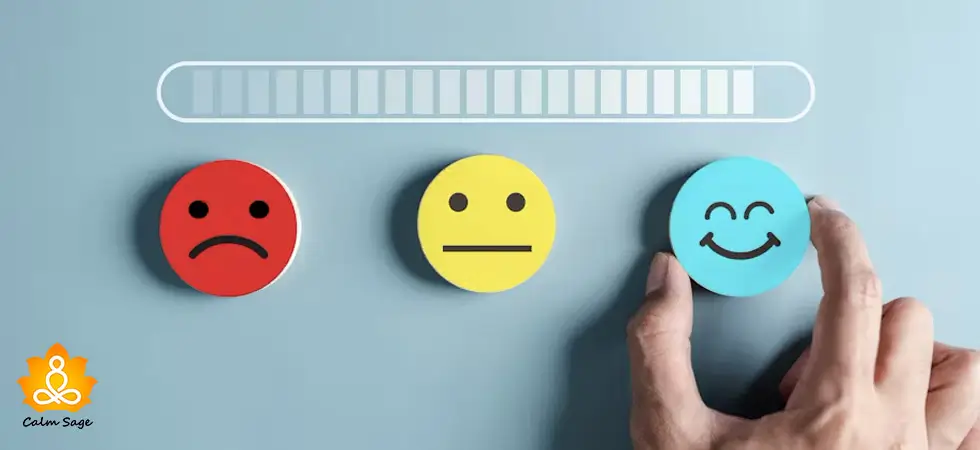Fawn Response To Trauma: What Is It And Ways To Unlearn Your Fawn Response

If you know about the post-traumatic stress disorder or trauma, you know the basic response – the flight, fight and freeze response – but did you know that there’s a fourth response to trauma as well – Fawn Response.
When you’re in the middle of a conflict, what’s your first reaction? Do you stand up and speak for yourself or do you spend time pleasing the other person? Do you struggle with understanding your needs?
This is where your ‘Fawn response’ is triggered. This response stems from childhood trauma and can be a symptom of post-traumatic stress disorder (PTSD). The fawn response to trauma is a defense mechanism related to complex PTSD and trauma that causes you to seek safety by complying with the wishes of others.
Let’s understand the Fawn response to trauma.
What Is The Fawn Response?

The phrase ‘Fawning’ was first mentioned by Pete Walker in his book “Complex PTSD: From Surviving to Thriving.”
Fawning or the fawn response means engaging in people-pleasing behavior to resolve conflict, gain security in relationships, and receive approval from others.
Let’s take an example, shall we? When one grows up in a toxic family environment, some choose to fight (become aggressive), others run away from the toxicity (flight), some struggle with making a decision (they freeze). However, when one’s fawn response is triggered they try to solve the problem by engaging in extreme people-pleasing.
To avoid further conflict, one rushes to please the other person – including agreeing with them, doing what they tell them to do, suppressing their feelings to avoid conflict, etc. This is what the fawn response to trauma and abuse means.
The fawn defense mechanism sets in when you grow up in an abusive or trauma-filled environment. So to cope with the trauma or avoid abuse, a child may develop a people-pleasing behavior where slowly they may begin to lose their sense of self, their needs, and desires.
With time, the fawn response to trauma can become a pattern well into adulthood. This behavior pattern can affect not only your overall wellness but can affect your professional and personal relationships as well.
How To Recognize The Fawn Response?

The fawn response is developed in childhood and can be hard to recognize in adulthood. However, some signs can help you recognize the fawn response:
- You look to others to understand your feelings
- You find it difficult to identify your feelings
- You have lost your sense of identity
- You’re constantly trying to please others
- When in conflict, your gut reaction is to please the other
- You ignore your needs and belief to accept those of others
- You experience unusual emotional responses such as sudden emotional outbursts at strangers
- You experience anger and guilt towards yourself
- You have trouble saying no to others
- You easily get overwhelmed but still take on more responsibilities, if asked
- You lack healthy boundaries and are often taken advantage of
- You feel uncomfortable when asked for an opinion
Fawning can be painful because you’re constantly suppressing your emotions while feeling responsible for others’ emotional responses. The fawn response can steal your confidence and can leave you feeling guilty for showing emotions.
The fawn response, in childhood, develops because a child needs to suppress sadness, fear, and other emotions to avoid abuse from their parents or primary caregivers. This kind of behavior results in turning their negative emotions inward causing them to form self-criticism, self-hatred, and self-harm.
As adults, this fawn response can become a reason to form codependency in relationships, attachment issues, depersonalization symptoms, and depression.
People with the fawn response can be targeted by narcissists or manipulative people. In these cases, the fawn response creates a vicious cycle where the narcissist is demanding of their partner and their partner feeling more comprehensive emotions of anger, guilt, and self-blame for giving their all – emotional and physical – to the relationship.
How To Stop Fawning?

There are some effective ways you can ‘unlearn’ your fawn response or stop fawning:
1. Seeking Professional Help
The best and the most effective way to unlearn your fawn response is to seek professional help. A therapist can help you understand the behavioral patterns and defense mechanisms you formed during your childhood. Therapies such as Eye Movement Desensitization and Reprocessing (EMDR) can help.
2. Setting Healthy Boundaries
If you have the fawn defense mechanism then you probably struggle with setting boundaries. You need to start setting healthy boundaries but take it slow. If someone pronounces your name wrong, correct them immediately. Start saying “no” when you don’t want to do something others pressure you into doing.
3. Stop Explaining Yourself
When you have the fawn response as a default, your natural reaction is most likely to be apologetic. However, you don’t need to apologize or explain yourself all the time. You need to stop pleasing others, that’s not your responsibility. Realize that some people are not going to be happy, no matter what you do, and it’s OK.
4. Learn To Delegate
Fawning makes you ignore your needs and take care of others’ needs but remember you don’t need to! If you have too much on your plate, taking care of yourself as well as others can lead you to experience burnout. It’s okay to delegate your tasks and it’s even okay to deliver less than what’s expected.
5. Know Your Emotions
Another way to stop fawning is to know your emotions. When your fawn response is triggered, think about why your response was triggered, how you’re feeling, and what do you need right now. Open yourself to your emotions and get back in touch with your needs, beliefs, and wants.
6. Form A Trauma-Support System
Therapy can help but you also need to find a support system with whom you can talk about your healing. They can be anyone – your family member, a friend, a mentor, or someone you trust implicitly. They are the ones you will first reach out to when you find yourself struggling with your response.
Writer’s Thoughts
If you’re ready to unlearn your fawn response to trauma and improve your mental and emotional health, these above-mentioned steps can help. Don’t worry though. Opening up and expressing your true feelings can help you stop fawning.
Learn to say no when you’re uncomfortable doing something, understand your feelings, open yourself up to the emotions you’ve repressed for so long.
Remember, you can unlearn your fawn response and while the journey might not be easier, you can get through it with the right professional support.
Everyone deserves to have a self-identity and to be seen as an individual – whether in a relationship or not.
It’s okay to be scared but remember that you too deserve to live an authentic life and be showered with love, kindness, and compassion. When you offer compassion to others, why not offer the same to yourself?
Healing from trauma can be challenging but you need to take it one day at a time. Believe in yourself as we believe in you.
I hope this article helps you find your way out of your fawn response and leads you to live a healthy and happy life. You can reach out to us at info@calmsage.com if you need our help or you can DM us on social media.
We’re here for you! You’ve got this.
Take Care!




















